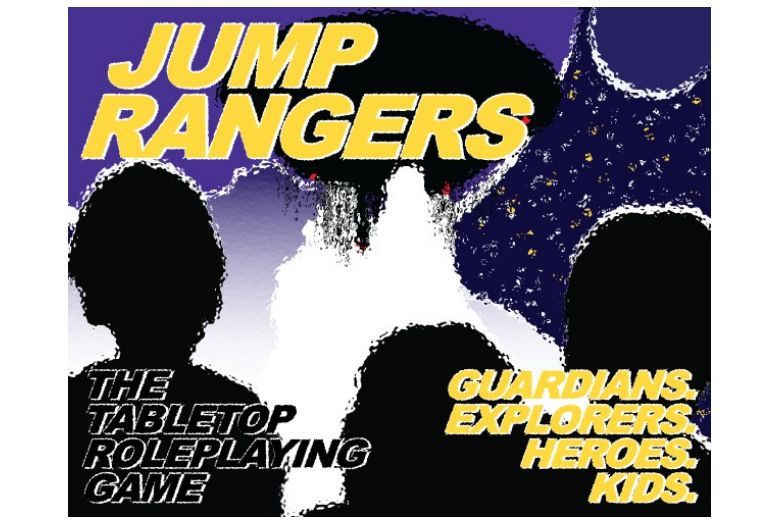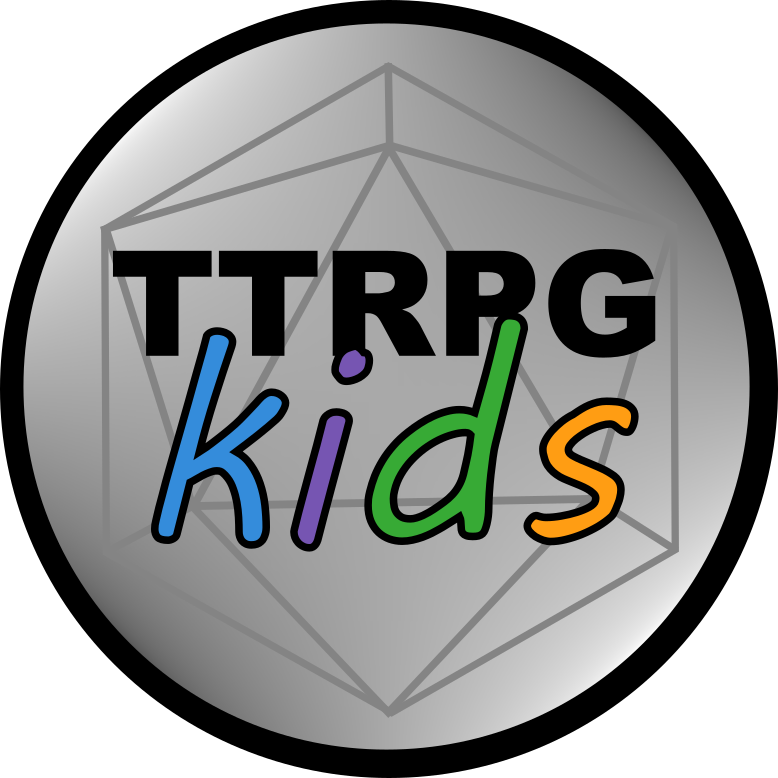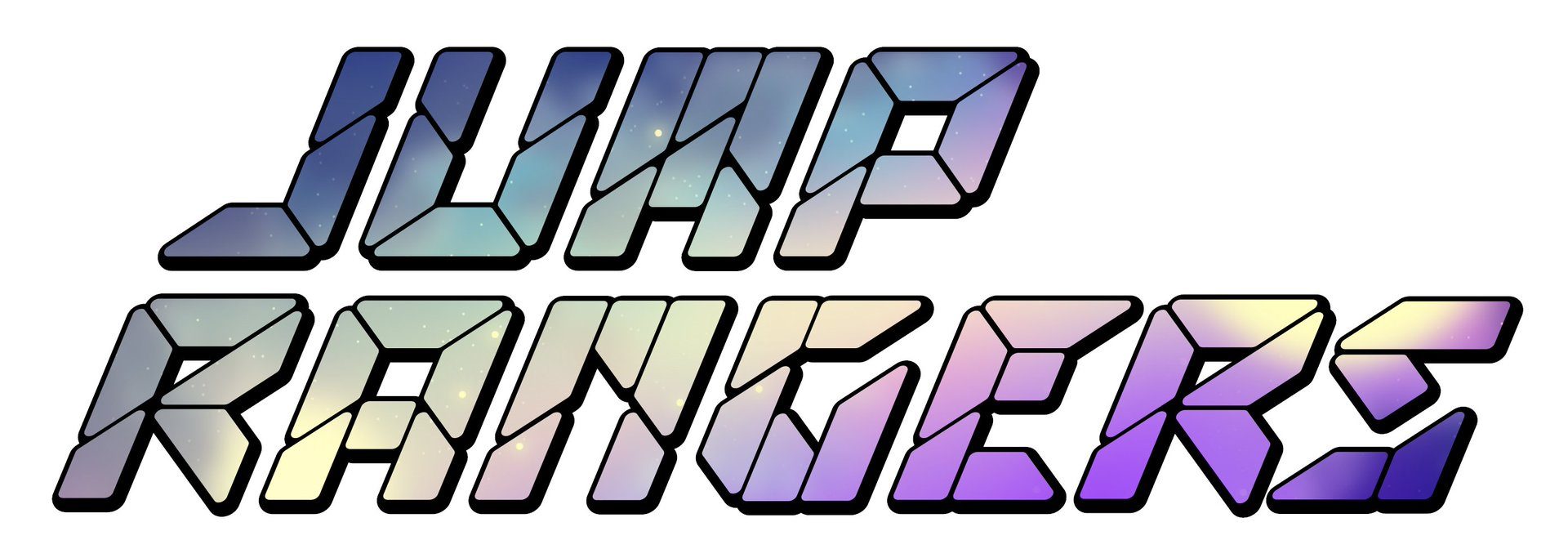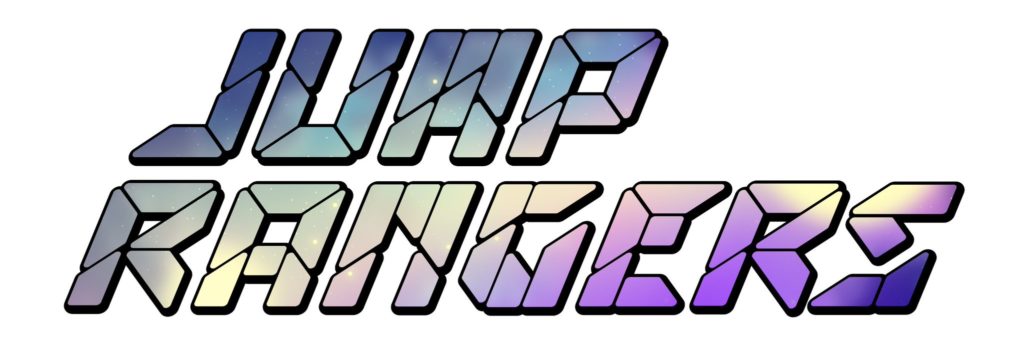Review of Jump Rangers, an all-ages sci-fi tabletop RPG
Jump to:
Jump Rangers is made for all ages (counting/reading/tracking required)
Jump Rangers is a full SRD with accompanying stories. The SRD and stories include mechanics for both non-combat and combat focused encounters, so it’s easy to adjust (by including or not) any scenarios depending on your kid’s level. Since my kid is only three, we focused more on the non-combat side, and we had A LOT of fun with the story.
Jump Rangers is designed for kids (your characters are actually kids, which is I think a great connection point), and I would say is probably on point for ages 8+ based on reading level, but, that said, my 3 year old still loved it. We read a lot of chapter books normally (1 chapter at a time), so we just stopped for breaks at each new scene in Jump Rangers to keep it on par with our normal reading and game time spans. I think older kids who enjoy reading would very much get into the story on their own without an issue.
Other than that, once our characters were set up, we were off and having fun rolling lots of dice! We played out Mission File: The Lightning Job and had a great time with it.
Jump Rangers is set across a whole galaxy!
Jump Rangers is set in a galaxy where humans have been displaced from Earth and must find ways of surviving out in the expanse of space! There’s planets to discover, problems to solve, and life to live, and it is up to the Jump Rangers, kids who take an oath to protect humanity, to make this all a reality.
It’s action and adventure framed in scenes, like an epic space opera, that give an engaging sci-fi setting. The stories are populated with creatures (I loved Nancy), robots, interesting NPCs, and fun planets to give a variety of different missions. The action scenes were also great – there’s real-life timers, explosions, chases, and more that helped it feel exciting throughout. It’s also broken up into scenes, which give great breaking points to pause the game if needed and check in on the group.
Jump Rangers felt like a Star Trek away team mission mixed with Mass Effect and a bit of Ender’s Game the whole time we were playing. My kid enjoyed stories about other planets and space creatures, and I was happy to share a topic that I really enjoyed with my kid and watch that smile light up.
Your character is part of the Jump Ranger corp
Your character is a Jump Ranger! They are a kid with “the right stuff” who vow to protect and honor humanity. They take on missions, work as a team, and solve any problems they come across.
The base manual walks you through character creation and explains what everything means clearly, and it includes a very clear 2-page character sheet that already is organized for your gear and any additional character information to add when you rank up (so no need to reprint every time).
Once we finished character creation, it was actually really easy to play, and I loved how each character’s virtues and training played into the game. WHO your character is (virtues and training) is just as important during your rolls as WHAT your character can do (strengths), so it emphasized each character’s personalities while we played.
Mechanics in Jump Rangers
Dice rolls:
When you create your character, you assign dice (d8’s) to your strengths (body, heart, mind, and spirit). Whenever you roll an action that requires use of those strengths, you roll the appropriate dice pool for that strength and see how many are at or below a target number.
To complete any given task, you need a certain number of successes (depending on the difficulty) in order to score a victory.
Where things get really interesting is how the target number is determined.
When you create your character, you assign virtues and training to them – these are a bunch of traits and extra skills that your character possesses. So, you total up how many of those virtues and training descriptions would help you with this task, and then that’s your target number.
I thought this was a really creative way of placing importance on the WHO aspect of each character versus the WHAT. It’s just as important that your character is outgoing or thoughtful or cool-headed as it is that they’re physically strong, depending on the scenario.
It also made it so we had to look a little more carefully at who was best suited for certain tasks. It’s not just about your four basic strengths, you need to look at the bigger picture with each character, and this facilitated some good discussions and teamwork.
Learning, training, and ranking up!:
At the end of each mission, you can “level up” by adding +1 die to the strength dice pool of your choice. You can also discuss with the game leader if you’ve grown as a character and can add an additional virtue as well.
I like that there’s the discussion point about the virtue here because this means that players are going to actively go out of their way to role-play character development in order to gain additional virtues. If someone wants to be able to pose at the end of the session that they should be able to add “empathetic” to their virtues, that means they’ll have needed to act that out through the mission to earn it. It’s an awesome incentive for participation.
You also can gain training history to use as well, but you need to talk with your game leader about actually going through training. This means that in order to get tech training, you may need to go on an extra Techno Corp mission, but you’d then have that for later missions. This facilitates not only planning ahead, but it drives home a point about taking time to hone your skills and then seeing the benefits of that later. It takes extra work (versus just getting the skill when you level up), but it’s worth it.
The Code:
I want to give a shout out to the section in here about The Code because I think it offers a really good frame for the general play of the game outside of the math part of the mechanics.
Before the manual gets into the crunchy bits, there is a set of rules that all Jump Rangers must follow. It includes phrases like “Every human life is precious. Nobody gets left behind.” and “Nobody said Jumping would be easy. Remember that nothing is impossible. Never give up.”
I feel like this establishes what a lot of people set up in session zero, but it is solidly integrated into the game’s lore. It gives a story reason for why players should follow a certain set of rules with their characters versus it being something that the game leader just tells everyone to do in the beginning. It makes the social rules part of the game, and it also shows what values are going to be modeled while everyone plays (which is really important because that can translate to outside the game).
What did my kid think about Jump Rangers?
My kid loved the stories and playing out all the action scenes! Having a dice pool was also a lot of fun too – for my kid, it was a full fistful of dice and so satisfying to play “separate out the successes” when it was a roll that his character was particularly well-skilled for.
I think my kid had a little trouble with a few of the flashback scenes that happened, but that was only due to time continuity and my kid being 3 years old and not having seen a flashback in a show before. Otherwise, it went off without a hitch! The scene breaks were perfect rest points that we could come back to later, and some of the scenes got so exciting that my kid just had to run around the table while fleeing from the explosion we had just set off!
This was a definite win for my kid, and I’m planning on adding some of the other missions as part of our future reading for storytime!
Overall thoughts on Jump Rangers
Jump Rangers is a well developed system that can be used in place of any of the other big systems – it has mechanics, stories, lore, characters, creatures, items… everything needed to set up a campaign built on a solid foundation. The manual is a bit long, but that is because it really does come with everything for a fully fleshed out SRD. It was a great sci-fi tabletop RPG to introduce to my family, and I hope you get to check it out!
Where to find a copy of Jump Rangers

A copy of Jump Rangers can be found on itch.io!
If you liked this post, make sure to subscribe to the TTRPGkids monthly newsletter to stay up to date on the latest reviews, tips and tricks, game and podcast list updates, and more! Thank you for playing tabletop RPGs with your kids and sharing this awesome hobby with the next generation!



Thank you! I’m glad you’re enjoying the site! If you’re interested in checking out new articles as they come, I do have a monthly newsletter to help as well! (link here)
I hope you continue to find the site helpful!
I’m glad the site is helping!
Thank you so much!! I’m glad the info is useful, and thank you for sharing!